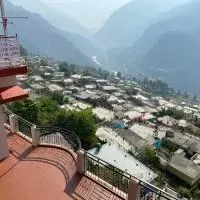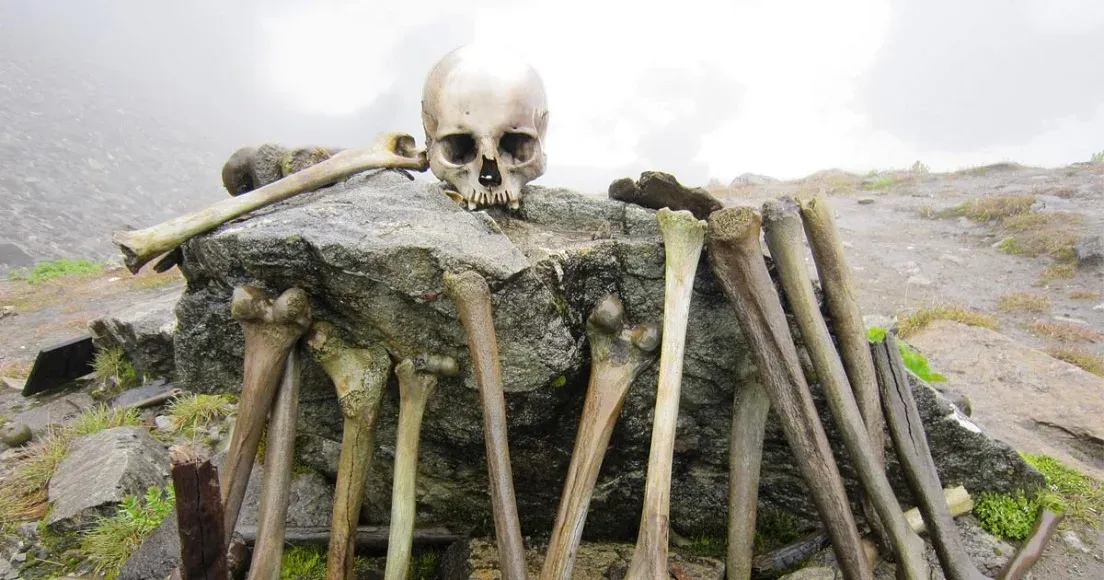Roop Kund Lake
Roop kund Lake, located in the Indian Himalayas, is a lake known for its mysterious and eerie past.
Location and Characteristics
Roop kund Lake, also known as the “Lake of Skeletons” or “Skeleton Lake,” is situated in the Uttarakhand region of India, at an altitude of about 5,029 meters (16,500 feet) above sea level. It is located near the Roop kund Pass and the Garhwal Himalayan range. The lake is a meeting point of nature and mystery, surrounded by breathtaking landscapes and snow-capped peaks.
The Mystery of the Bones
Roopkund Lake is famous for the human bones and skulls that have been discovered in its vicinity. These remains have been found primarily during the spring when the ice and snow begin to melt. The bones were found scattered on the lake’s bed and along its shores. These remains have been the subject of extensive studies and have sparked many speculations and theories.
Theories on the Origin of the Remains
The bones found near the lake have given rise to several theories about their origin:
Fatal Pilgrimages: One of the most accepted theories is that the remains belong to a group of pilgrims who were caught in a violent storm while heading to the Nanda Devi temple, a deity revered in the region. According to this theory, the storm caused the death of many pilgrims, and their bodies were either abandoned or buried in the lake.
Epidemic or Disease: Some studies have suggested that the remains might have been victims of an epidemic that spread among the pilgrims, killing them en masse. However, this theory has not been definitively confirmed.
Conflict or Sacrifice: Some more speculative theories hypothesize that the remains could belong to a group of soldiers or mercenaries killed in battle or sacrificed in religious rituals. However, there is no concrete evidence supporting this theory.
Scientific Discoveries
In 2004, a team of Indian and British researchers conducted genetic studies on the recovered bones. The results revealed that the remains belonged to individuals from various genetic populations, suggesting that the group was not homogeneous. The findings also supported the theory that the remains were of pilgrims from different regions of India and other areas of Asia.
Cultural and Touristic Importance
Roopkund Lake has become a coveted destination for trekkers and adventure enthusiasts, attracted by its spectacular scenery and the mystery surrounding it. However, the area is remote, and trekking can be challenging due to the altitude and variable weather conditions.
Conservation and Access
The region around Roopkund Lake is protected by the Indian government as part of the Nanda Devi National Park. Trekkers must obtain special permits to visit the area and must be prepared for environmental challenges. Protecting the area is crucial for preserving the environmental integrity and ensuring the safety of visitors.
Conclusion
Roopkund Lake remains a place shrouded in mystery and history, capturing the attention of scholars and tourists with its blend of natural beauty and unresolved enigmas. The discovery of the bones and the theories surrounding them continue to stimulate the imagination and curiosity of anyone who ventures into this remote region of the Himalayas.
 And you? Would you go trekking to the Lake of Mysteries? Here are some hotels…
And you? Would you go trekking to the Lake of Mysteries? Here are some hotels…
Subscribe to our YouTube channel







